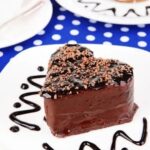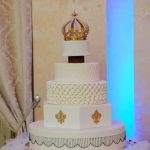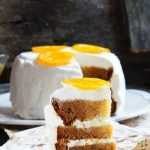Are you looking for how to decorate fondant cake ideas? Whether you’re a beginner or an experienced baker, fondant cake decoration is a creative and enjoyable way to add a personal touch to your baked creations.
From covering cakes with smooth, flawless fondant to sculpting intricate designs and painting detailed patterns, the possibilities are endless. In this article, we will explore the art of decorating fondant cakes, providing you with essential tools and materials, step-by-step guides, creative ideas, tips and tricks, advanced techniques, and troubleshooting solutions to help you master the art of fondant cake decoration.
When it comes to decorating a cake with fondant, having the right tools and materials is key to achieving professional-looking results. We will discuss the essential items that every fondant decorator should have in their arsenal, from rolling pins and smoothers to luster dusts and edible paints. Additionally, we will guide you on choosing the right type of fondant for your specific decorating needs – whether it’s covering a cake, creating figurines or intricate details.
In addition to providing you with the foundational knowledge and techniques for working with fondant, we will also explore creative ideas for fondant cake decoration. From simple designs suitable for beginners to more complex patterns and sculpting techniques for advanced decorators, there is something for everyone in this comprehensive guide. Get ready to be inspired and unleash your creativity as we delve into the world of fondant cake decorating.
Essential Tools and Materials for Decorating Fondant Cakes
When it comes to decorating fondant cakes, having the right tools and materials is essential to achieving professional-looking results. Here are some essential items that every fondant cake decorator should have in their toolkit:
Rolled Fondant
The most important material for decorating fondant cakes is, of course, the fondant itself. Rolled fondant is available in a variety of colors and can be easily shaped and molded to create intricate designs. It is important to choose high-quality fondant that is easy to work with and provides a smooth finish.
Rolling Pin
A good quality rolling pin is essential for rolling out the fondant to the desired thickness before covering your cake. Look for a non-stick rolling pin that will make it easier to work with the fondant without it sticking or tearing.
Fondant Smoother
A fondant smoother is used to help achieve a smooth and flawless finish when covering a cake with fondant. It helps eliminate air bubbles and creases, resulting in a professional look.
Decorating Tools
Various decorating tools such as modeling tools, cutters, and shaping tools are essential for creating different shapes, textures, and designs on the fondant. These tools allow for creativity and precision in creating beautiful decorations for your cakes.
Having the right tools and materials will make all the difference in how to decorate fondant cake ideas. With these essentials at your disposal, you’ll be well-equipped to bring your creative visions to life on your next fondant cake project.
Choosing the Right Fondant for Cake Decorating
When it comes to decorating a cake with fondant, choosing the right type of fondant is crucial to the success of your creation. There are different options available in the market, and each has its own set of characteristics that can affect the outcome of your decoration.
Types of Fondant
There are two main types of fondant: rolled fondant and poured fondant. Rolled fondant is the more commonly used type for cake decorating as it can be easily shaped and molded onto cakes. Poured fondant, on the other hand, is a creamy confection that is poured over the cake for a smooth finish.
Homemade vs Store-Bought Fondant
Deciding whether to use homemade or store-bought fondant is another important factor to consider. Homemade fondant allows for greater control over the ingredients, but can be time-consuming and tricky to perfect. Store-bought fondant, on the other hand, offers convenience and consistency in quality.
Considerations for Choosing Fondant
When choosing the right fondant for cake decorating, consider factors such as color availability, flavor, pliability, and shelf-life. It’s important to select a fondant that aligns with your design vision and practical needs. Some brands offer pre-colored options or flavored fondants which can add an extra dimension to your cake decoration.
Ultimately, selecting the right fondant involves considering your specific requirements and skill level in order to achieve the desired results in your cake decorating project. By understanding these considerations, you will be better equipped to tackle how to decorate fondant cake ideas with confidence and creativity.
Step-by-Step Guide to Covering a Cake With Fondant
One popular and elegant way to decorate cakes is by using fondant. Fondant is a versatile sugar paste that can be shaped, molded, and colored to create intricate designs or simple decorations on cakes. In this section, we will provide you with a step-by-step guide on how to cover a cake with fondant, which is the foundation for any fondant cake decoration.
First, before you start working with fondant, it’s essential to have the right tools and materials. Make sure you have a rolling pin, cornstarch or powdered sugar for dusting the work surface, a cake smoother for achieving a smooth finish, and of course, your chosen fondant. It’s also crucial to have a well-leveled cake with a nice layer of buttercream or ganache to provide a stable base for the fondant.
To begin covering the cake with fondant, start by kneading the fondant until it’s soft and pliable. Then roll it out on your work surface into a circle or rectangle-keeping in mind that it should be large enough to cover the entire cake.
Use the rolling pin to lift and carefully drape the rolled-out fondant over the top of the cake. Smooth out any air bubbles or wrinkles as you gently press down on the sides of the cake.
Once your cake is covered with fondant, you can then proceed to decorate it using various techniques such as embossing, cutting out shapes, or adding details like flowers or ribbons. The possibilities are endless when it comes to decorating with fondant – from simple designs to intricate details – so let your creativity flow. If you’re looking for more inspiration on how to decorate fondant cakes, read on for creative ideas in the next section.
Creative Ideas for Fondant Cake Decoration
Decorating a fondant cake opens up a world of possibilities for creativity and expression. Whether you are a beginner or an experienced baker, there are countless ways to personalize your fondant cake and make it truly unique. Here are some creative ideas for fondant cake decoration to inspire your next baking project:
- Simple Shapes and Patterns: Use cookie cutters or stencils to create basic shapes such as hearts, stars, or flowers out of fondant. Arrange them in a pattern on the cake for a charming and whimsical design.
- Edible 3D Figures: Sculpt cute animals, cartoon characters, or miniature objects out of fondant to place on top of your cake. These edible figurines add a fun and playful touch to any celebration.
- Lace and Embossed Details: Roll out thin sheets of fondant and use lace molds or embossing tools to create intricate patterns. These delicate details can add an elegant and sophisticated look to your cake.
If you’re looking for more advanced ideas, consider trying out techniques like painting on fondant with edible food coloring or using an airbrush for a smooth ombre effect. With these creative ideas, the possibilities for decorating fondant cakes are endless.
Tips and Tricks for Achieving Smooth and Flawless Fondant Finish
When it comes to decorating a fondant cake, achieving a smooth and flawless finish is essential for a professional look. There are several tips and tricks that can help you perfect your fondant technique and ensure that your cakes look immaculate.
One of the key factors in achieving a smooth fondant finish is ensuring that your cake is properly prepared before applying the fondant. Start by covering your cake with a thin layer of buttercream or ganache, also known as a crumb coat, which will help the fondant adhere to the cake and prevent any crumbs from showing through. It’s important to chill the crumb-coated cake in the refrigerator for at least 30 minutes before applying the fondant.
Another tip for achieving a smooth fondant finish is to roll out your fondant evenly and to the right thickness. Use a rolling pin to roll out the fondant on a clean surface dusted with powdered sugar or cornstarch to prevent sticking. Aim for an even thickness of about 1/8 inch, as this will make it easier to cover the cake without creating any folds or wrinkles in the fondant.
Lastly, using smoothing tools such as fondant smoothers and paddles can help ensure that your fondant is free of air bubbles and imperfections. Gently press the smoother against the sides and top of the cake, using light but firm pressure to smooth out any wrinkles or creases. Taking your time during this process will ultimately result in a flawless finish on your decorated cake.
By following these tips and tricks, you can achieve a smooth and flawless finish on your fondant-decorated cakes. With practice and patience, you’ll be able to create professional-looking cakes that are sure to impress anyone who sees them. Whether you’re just starting out or looking to improve your skills, these techniques will help take your fondant cake decorating to the next level.
Advanced Fondant Techniques
Once you have mastered the basics of covering a cake with fondant and creating simple designs, you may want to take your fondant decorating skills to the next level. Sculpting, painting, and airbrushing are advanced techniques that can add a professional touch to your cakes.
Sculpting with fondant allows you to create three-dimensional shapes and figures to decorate your cakes. Whether it’s intricate flowers, adorable animals, or realistic objects, sculpting fondant gives you endless possibilities for unique and personalized cake designs. To start sculpting with fondant, make sure to use a firm but pliable fondant that will hold its shape when molded.
Painting on fondant is another advanced technique that can enhance the details of your cake decorations. Edible food coloring or gel colors can be diluted with clear alcohol such as vodka or lemon extract to create a paint-like consistency that can be used on fondant. This technique allows you to add depth, shading, and intricate patterns to your fondant creations.
Airbrushing is a popular technique used by professional pastry chefs to achieve smooth gradients of color on fondant cakes. An airbrush gun can be used with edible food coloring or airbrush color specifically designed for use on cakes. By adjusting the pressure and distance of the airbrush gun, you can create stunning ombre effects, soft transitions between colors, and precise detailing on your fondant cake decorations.
| Fondant Technique | Description |
|---|---|
| Sculpting | Create three-dimensional shapes and figures for unique cake designs. |
| Painting | Enhance cake decorations with detailed patterns using edible colors. |
| Airbrushing | Achieve smooth gradients and precise detailing on fondant cakes using an airbrush gun. |
Troubleshooting Common Issues When Decorating With Fondant
Decorating with fondant can be a fun and creative experience, but it can also come with its fair share of challenges. Here are some common issues that may arise when decorating with fondant and how to troubleshoot them:
1. Cracking or Tearing: If you find that your fondant is cracking or tearing as you try to cover your cake, it may be too dry. To remedy this issue, knead a small amount of vegetable shortening into the fondant to make it more pliable. Additionally, ensure that your cake is completely smooth before applying the fondant to prevent any sharp edges from puncturing the surface.
2. Elephant Skin: When fondant develops a wrinkled appearance resembling elephant skin, it is usually due to excess moisture escaping from the fondant too quickly. This can occur if the cake is placed in a warm environment or if you roll out the fondant too thin. To avoid this issue, make sure to work in a cool area and roll out the fondant to an even thickness.
3. Bulging or Sagging: If you notice bulging or sagging in your fondant after covering the cake, there may be air trapped underneath. Use a pin to gently prick any air bubbles and smooth them out with your hands. Additionally, be sure to properly support tiered cakes with dowels and cardboard rounds to prevent any structural issues.
By being aware of these common issues and implementing these troubleshooting tips, you can save yourself from unnecessary stress and frustration when working with fondant for cake decoration.
- Cracking or Tearing
- Elephant Skin
- Bulging or Sagging
Remember that practice makes perfect when it comes to working with fondant, so don’t be discouraged if you encounter these issues at first. With time and experience, you’ll become more adept at troubleshooting and creating beautiful fondant decorations for your cakes.
- Be patient and practice
- Utilize troubleshooting techniques
- Enroll in classes or seek guidance from experts
Conclusion
In conclusion, decorating fondant cakes offers endless possibilities for creativity and innovation. Whether you are a beginner or an experienced baker, the key to successful fondant cake decoration lies in mastering the essential tools and techniques, as well as developing your own unique style. From covering a cake with fondant to sculpting, painting, and airbrushing intricate designs, there are many ways to elevate your cake decorating skills.
When it comes to choosing the right fondant for your cake decorating project, consider factors such as flavor, texture, and workability. Experiment with different brands and types of fondant to find what works best for you. Additionally, exploring creative ideas for fondant cake decoration is essential. From simple designs to intricate details, drawing inspiration from various sources such as nature, art, and fashion can help you develop your signature style.
As you embark on your fondant cake decorating journey, remember that practice makes perfect. Don’t be discouraged by common issues when working with fondant; instead, use them as learning opportunities to improve your skills.
There are countless resources available-such as online tutorials, books, and workshops-that can provide valuable guidance and inspiration for aspiring cake decorators. By continuously seeking inspiration and refining your techniques, you will be well on your way to creating stunning fondant cakes that will leave a lasting impression on any occasion.

Welcome to my blog about home and family. This blog is a place where I will share my thoughts, ideas, and experiences related to these important topics. I am a stay-at-home mom with two young children. I hope you enjoy reading it! and may find some helpful tips and ideas that will make your home and family life even better!





